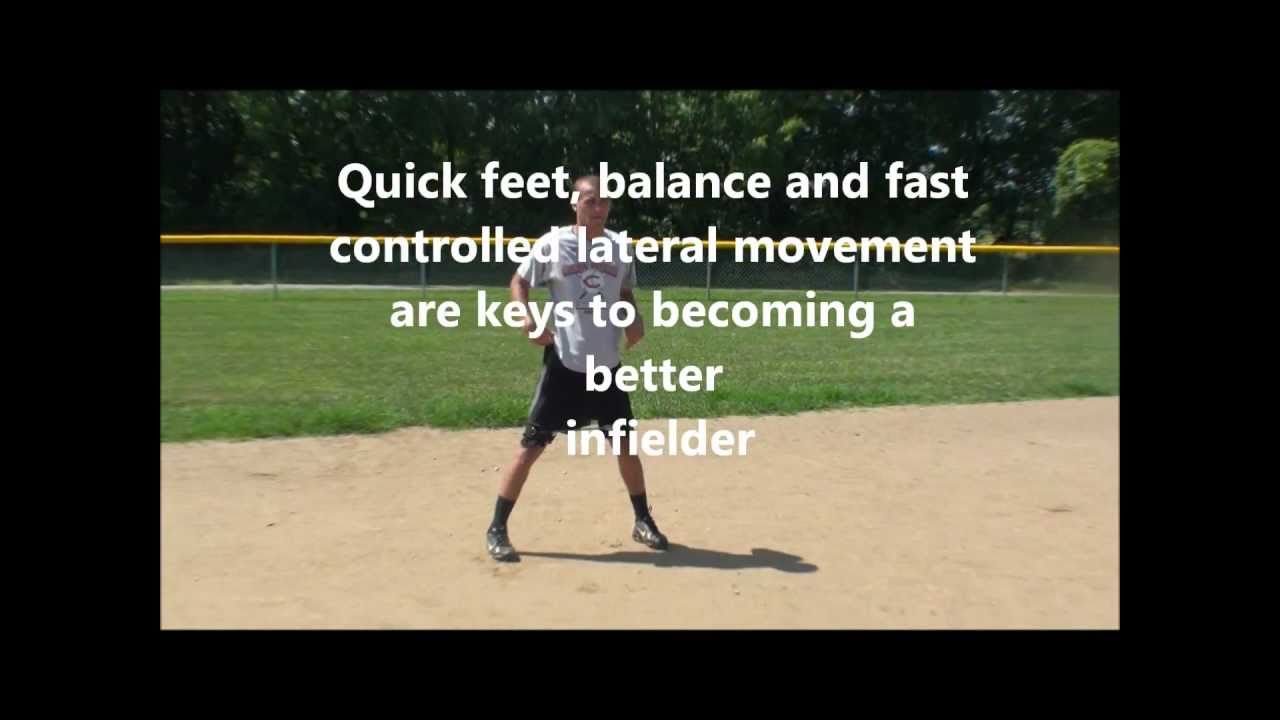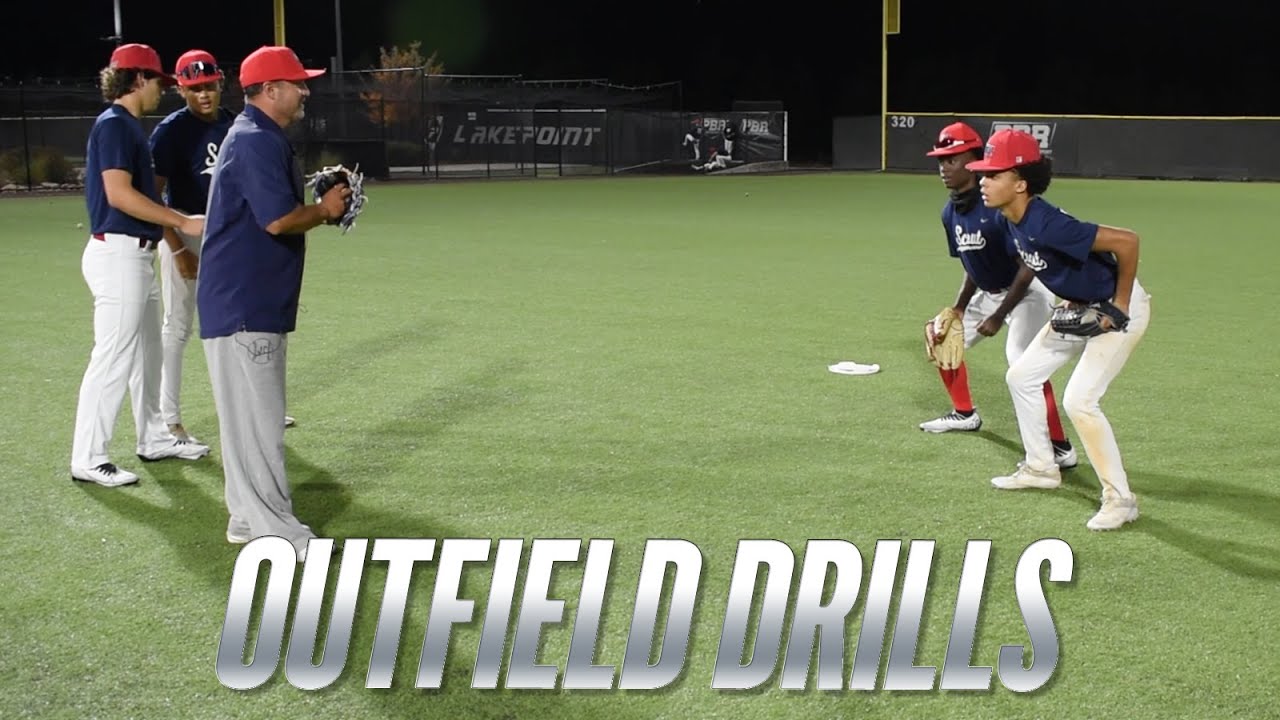Summary of the Article
Having quick feet is vital for making crucial plays in baseball.
Effective training begins with the right warm-ups and preparations before drills.
Ladder drills can help improve agility and quickness to the side.
Cone drills can improve a player’s ability to change directions swiftly.
There are specific drills for infielders and outfielders to meet their unique fielding needs.
The Importance of Quick Feet in Baseball
In baseball, having quick feet isn’t just about running fast. It’s about making intelligent, fast decisions that can turn difficult plays into outs. Picture yourself in the infield with a hard grounder coming your way. If you don’t have quick feet, you might not get to the ball in time, or worse, you could mess up the play. That’s why quick feet are important—they help you get to the ball quickly, position your body correctly, and make a strong, accurate throw.

Start with the Basics: Pre-Drill Preparation and Warm-Ups
Before you dive into any drills, you need to get your body ready. Begin with a dynamic warm-up to prepare your muscles and increase your heart rate. Consider this: you wouldn’t start a sprint without stretching first, would you? The same principle applies to fielding drills. A good warm-up might include exercises like jumping jacks, arm circles, leg swings, and a bit of light jogging. Not only does this help prevent injuries, but it also ensures that you’re at your peak performance when it’s time to start the drill.
Taking the Field: Expert Strategies to Improve Footwork
Let’s now discuss a few strategies that will help you take the field. Effective footwork is a combination of balance, agility, and coordination. To become proficient in these, you’ll need to concentrate on drills that require you to move rapidly while keeping control of your body. Keep in mind that practice doesn’t make perfect; perfect practice makes perfect. Therefore, focus on the specifics as you go through these drills.
Agility Ladder Drills for Lateral Speed
An agility ladder is a great way to work on your foot speed. It promotes fast, accurate foot placement and helps build that lateral speed that’s so critical in the infield. Here’s a basic ladder drill to start with:
Stand at one end of the ladder, facing the length of it.
Step into each box quickly with both feet, one foot at a time, moving sideways.
Keep your head raised and keep a rhythm as you move.
When you get to the end, circle around and go back the other way.
Concentrate on speed, but don’t compromise form for speed. As you improve, you can vary the patterns to push yourself more.
Cone Drills for Fast Direction Changes
Quickly changing direction is crucial in fielding, especially when you need to adapt to a ball that hops at the last second. Cone drills are excellent for this. Set up four cones in a square, approximately five feet apart. Start at one cone, sprint to the next, then shuffle sideways, backpedal, and shuffle back to the start. It’s like a small obstacle course that mimics the movements you’ll make on the field.
Play Ball: Fast Feet Drills for Infielders and Outfielders
Infielders and outfielders have unique responsibilities on the field and therefore need specialized drills. Infielders need to respond quickly to ground balls and make fast throws, while outfielders need to follow fly balls and cover a larger area. Let’s look at drills designed specifically for each position, such as the “Quick Feet” drill that can improve agility and speed on the field.
Infielders: The Zigzag Ball Scoop Challenge
If you’re an infielder, here’s a drill that simulates the real game. Set up a zigzag pattern with balls placed at each point. Start at one end, run fast to the first ball, pick it up, and throw it to a teammate or into a bucket. Then, change direction quickly and go to the next ball. This drill makes your reaction time better and teaches you to stay low and ready. For more quick reflex youth baseball fielding drills, check out our comprehensive guide.
Outfielders: The Fly Ball Shuffle and Catch Drill
Outfielders, it’s your turn. The shuffle and catch drill is a great way to practice reading and catching fly balls. Have a coach or teammate hit or throw fly balls slightly to your left or right. Shuffle your feet to get under the ball, keeping your eyes on it the whole time. This drill not only improves your footwork but also your hand-eye coordination.
Turning Drills into Game Day Success
So, you’ve got the drills down, but how do you make sure they actually help on game day? It’s all about making

Adding Competition to Drills
Drills can be made more like real game scenarios by adding a competitive aspect. You can time the drills or keep a count of how many successful plays are made consecutively. This not only increases the pressure but also makes the practice sessions more enjoyable and interesting.
Using Visualization and Mental Practice
In addition to physical drills, mental rehearsals can be very beneficial. Picture yourself making the perfect play. Visualize the ball, feel your feet moving, and see yourself making the throw. This mental drill can increase self-confidence and readiness for actual gameplay.
5 Best Drills for Creating Fast Fielders
Now, let’s get into the best drills that will make your players into fast fielders, ready for whatever the game throws at them.
Running Across the Field and Scooping
Reflex Line Drives for Mastering the Hot Corner
Explosive Double Play Turnovers
Techniques for Approaching Outfield Ground Balls
Precise Short Hop Pick and Throw
Drill 1: Running Across the Field and Scooping
This drill is designed to help players learn to cover a lot of ground quickly and pick up the ball while still moving. Starting from one baseline with a glove, players will sprint to a ball that is placed on the other side of the field, scoop it up, and continue running to make a throw to a target or partner.
Drill 2: Quick Reflex Line Drives for Mastering the Hot Corner
Being a hot corner (third base) player demands quick-as-lightning reflexes. A coach should hit line drives at different angles to the third baseman’s left and right, who needs to react fast to either catch the ball or stop it. This drill is designed to help develop quick hands and feet.
Drill 3: Double Play Turnover Quickness
Executing a double play is a skill. Begin with a ground ball to the shortstop, who tosses it to the second baseman at the base. The second baseman must then spin and throw to first. This drill focuses on footwork, timing, and the rapid exchange of the ball.
Exercise 4: Outfield Ground Ball Techniques
Outfielders need to approach ground balls with control to prevent extra bases. Practice charging ground balls with a crow hop before throwing. This helps with momentum and accuracy, ensuring you’re ready to get the ball back into the infield quickly.
Drill 5: Accurate Short Hop Pick and Throw. For more youth baseball training techniques, check out our comprehensive guide on fun drills and tips to foster passion for the game.
For those playing infield, it’s important to be able to deal with short hops. Set up a number of balls at varying distances from the player. They should move towards each ball, cleanly pick up the short hop, and accurately throw it to a target. This exercise helps to improve reaction speed and hand-eye coordination. For more fun drills and tips to foster passion for the game, check out our resources.
Conclusion: Creating a Robust Defensive Foundation
In the game of baseball, a solid defense can mean the difference between victory and defeat. By including these quick feet fielding drills in your regular training, you’ll create a team that’s nimble, alert, and difficult to overcome. Remember, the secret to progress is consistency, so maintain these drills in your regular schedule and observe your players’ abilities improve.

Commonly Asked Questions
Why Are These Drills Appropriate for Youth Athletes?
These drills are created specifically for youth athletes. They aim to improve agility, coordination, and quick reaction times in a way that is enjoyable and engaging. Additionally, they can be adjusted to fit the abilities of each player, ensuring that everyone is pushed but not to the point of frustration.
How Regularly Should You Practice These Drills?
To get the most out of these quick feet fielding drills, you should practice them often. Try to do them at least two or three times a week, making them a part of your regular practice schedule. Regular practice is the best way to improve your skills on the field.
Can You Do These Drills Alone?
Definitely, a lot of these drills can be modified for individual practice. For instance, a player can do speed ladder drills and cone drills by themselves. For fielding drills, a rebound net can be used to mimic ground balls and line drives.
What Gear Do You Need for Fielding Drills?
You don’t need much to get started with these drills, and you probably already have everything you need at your local baseball field. You’ll need some cones, a speed ladder, some baseballs, and a glove. For some drills, you’ll also need a partner, coach, or rebound net to help you simulate real game situations.
How to Gauge Progress in Youth Fielding Abilities?
Count the amount of successful plays made during drills and games.
Record how fast players can finish agility circuits.
Observe the decrease in fielding mistakes over the season.
By using these metrics, you can witness real improvement in your players’ skills.
When is the Right Time to Start More Complex Drills?
As soon as the players have a good grasp of the basic drills, it’s time to introduce more complex ones. You’ll know they’re ready when you see their confidence increase and their mistakes decrease during practice. Always push your players to do better to help them improve.
Leave a Reply